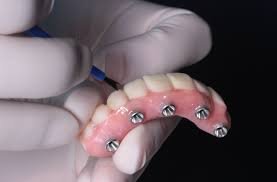
skin infection icd 10
What Are ICD-10 Codes?
ICD-10 codes (International Classification of Diseases, 10th Revision) are standardized alphanumeric codes used by healthcare providers and insurers to classify diseases, symptoms, and procedures. Managed by the World Health Organization (WHO), the ICD-10 system ensures uniform documentation across global medical systems.
In the United States, ICD-10-CM (Clinical Modification) is used for diagnosis coding, while ICD-10-PCS covers inpatient procedures. For skin infections, ICD-10-CM offers a range of codes that accurately reflect the type, location, and severity of the infection.
For official ICD-10 coding guidelines, visit CDC’s ICD-10-CM page
Why Accurate ICD-10 Coding for Skin Infections Matters
Incorrect coding can result in:
- Claim denials or delays
- Inaccurate patient records
- Compliance issues and audits
- Revenue loss for clinics and hospitals
Accurate ICD-10 coding for skin infections allows:
- Proper reimbursement
- Tracking of disease trends
- Better clinical communication
- Improved patient outcomes
Medical coders, physicians, and billing teams must understand the nuances of each infection type and anatomical site to select the right ICD-10 code.
Common Skin Infections & Their ICD-10 Codes
Below are some of the most frequently used skin infection codes, organized by infection type.
1. Cellulitis and Abscess (L03 Series)
This group includes localized bacterial infections, often caused by Staphylococcus aureus or Streptococcus.
| Location | ICD-10 Code | Description |
|---|---|---|
| Face | L03.211 | Cellulitis of face |
| Finger | L03.012 | Cellulitis of finger |
| Foot | L03.115 | Cellulitis of right lower limb |
| Buttock | L03.317 | Cellulitis of buttock |
| Trunk | L03.311 | Cellulitis of chest wall |
These codes specify site and laterality when applicable. The coder should document the exact location, whether it’s right, left, or unspecified.
2. Impetigo (L01 Series)
Impetigo is a highly contagious, superficial bacterial skin infection common in children.
| Code | Description |
|---|---|
| L01.00 | Impetigo, unspecified |
| L01.01 | Non-bullous impetigo |
| L01.02 | Bullous impetigo |
Make sure to distinguish between bullous and non-bullous types, as treatment differs.
3. Folliculitis, Furuncles, and Carbuncles (L02 Series)
This series includes deeper skin infections involving hair follicles and surrounding tissue.
| Code | Description |
|---|---|
| L02.61 | Furuncle of neck |
| L02.415 | Carbuncle of right lower limb |
| L02.211 | Abscess of face |
| L02.91 | Cutaneous abscess, unspecified |
Include laterality if it affects limbs, and specific site like scalp, trunk, or buttock.
4. Fungal Skin Infections (B35–B36 Series)
Fungal infections can be superficial or subcutaneous and often require antifungal therapy.
| Code | Description |
|---|---|
| B35.0 | Tinea barbae and tinea capitis |
| B35.3 | Tinea pedis (athlete’s foot) |
| B35.4 | Tinea corporis (body ringworm) |
| B35.6 | Tinea cruris (jock itch) |
| B36.0 | Superficial candidiasis |
Be specific about the fungal species if known (e.g., Candida, Trichophyton), and note any complications like ulceration or secondary infection.
5. Viral Skin Infections (B00–B09)
Some skin infections are viral, such as:
| Code | Description |
|---|---|
| B00.0 | Eczema herpeticum (HSV) |
| B00.1 | Herpesviral vesicular dermatitis |
| B02.9 | Zoster without complications |
| B07.0 | Plantar wart |
| B08.1 | Molluscum contagiosum |
Ensure the correct viral origin is documented to avoid misclassification.
How to Code Skin Infections with Underlying Conditions
When coding skin infections, always check for underlying causes or complications, including:
- Diabetes
Use combination codes like E11.621 (Type 2 diabetes with foot ulcer) + infection code. - MRSA
Add B95.62 (Methicillin-resistant Staphylococcus aureus as cause of diseases classified elsewhere) as a secondary code. - Post-surgical infections
Use T81.4XXA (Infection following procedure), paired with a specific infection code.
Proper sequencing ensures accurate claim processing and treatment documentation.
Tips for Correct Skin Infection Coding
✅ 1. Document the Site Clearly
Be as specific as possible:
- Left vs. right limb
- Trunk vs. chest wall
- Periorbital vs. orbital cellulitis
✅ 2. Note the Type of Infection
Is it:
- Bacterial?
- Fungal?
- Viral?
- Parasitic?
Always identify the etiology when available.
✅ 3. Include Additional Codes When Needed
Use additional ICD-10 codes for:
- Infecting organism (B95–B97 series)
- Underlying chronic conditions
- Complications like necrosis or sepsis
✅ 4. Avoid Unspecified Codes
Only use unspecified codes like L02.91 or L03.90 when there is truly insufficient documentation. Insurers may deny claims that rely heavily on unspecified coding.
When to Use Z Codes for Skin Issues
Z codes represent reasons for medical services other than disease (e.g., encounters for dressing change or follow-up). Relevant examples:
| Code | Description |
|---|---|
| Z48.00 | Encounter for change of surgical dressing |
| Z09 | Follow-up exam after treatment of skin infection |
| Z20.828 | Contact with infectious disease (e.g., MRSA exposure) |
Use Z codes in conjunction with primary infection codes to provide a complete clinical picture.
ICD-10 Codes for Skin Infection Complications
Skin infections can escalate to:
- Sepsis (A41.9)
- Ulceration (L97 Series)
- Gangrene (I96)
- Necrotizing fasciitis (M72.6)
Code both the infection and the complication, and ensure proper sequencing (e.g., principal diagnosis first, followed by manifestations or causative agents).
ICD-10 Skin Infection Coding Case Example
Scenario:
A patient presents with a painful, red, swollen lesion on the right lower leg. Diagnosis: cellulitis with MRSA.
Correct Coding:
- L03.115 – Cellulitis of right lower limb
- B95.62 – MRSA as cause of disease classified elsewhere
If the patient has diabetes:
- E11.621 – Type 2 diabetes with foot ulcer
- L97.911 – Non-pressure ulcer of right lower leg, limited to skin breakdown
- B95.62 – MRSA as secondary
Documentation is key to selecting accurate codes and avoiding missed revenue.
Final Thoughts: Coding Skin Infections Accurately Matters
Proper use of ICD-10 codes for skin infections ensures more than just billing accuracy—it protects patients, improves care coordination, and supports public health tracking.
Whether you’re treating cellulitis, tinea, or herpes-related lesions, the correct diagnosis code reflects the patient’s true condition and justifies the level of care provided.
As always, clear documentation and specificity in coding are your best tools to stay compliant, efficient, and accurate.






